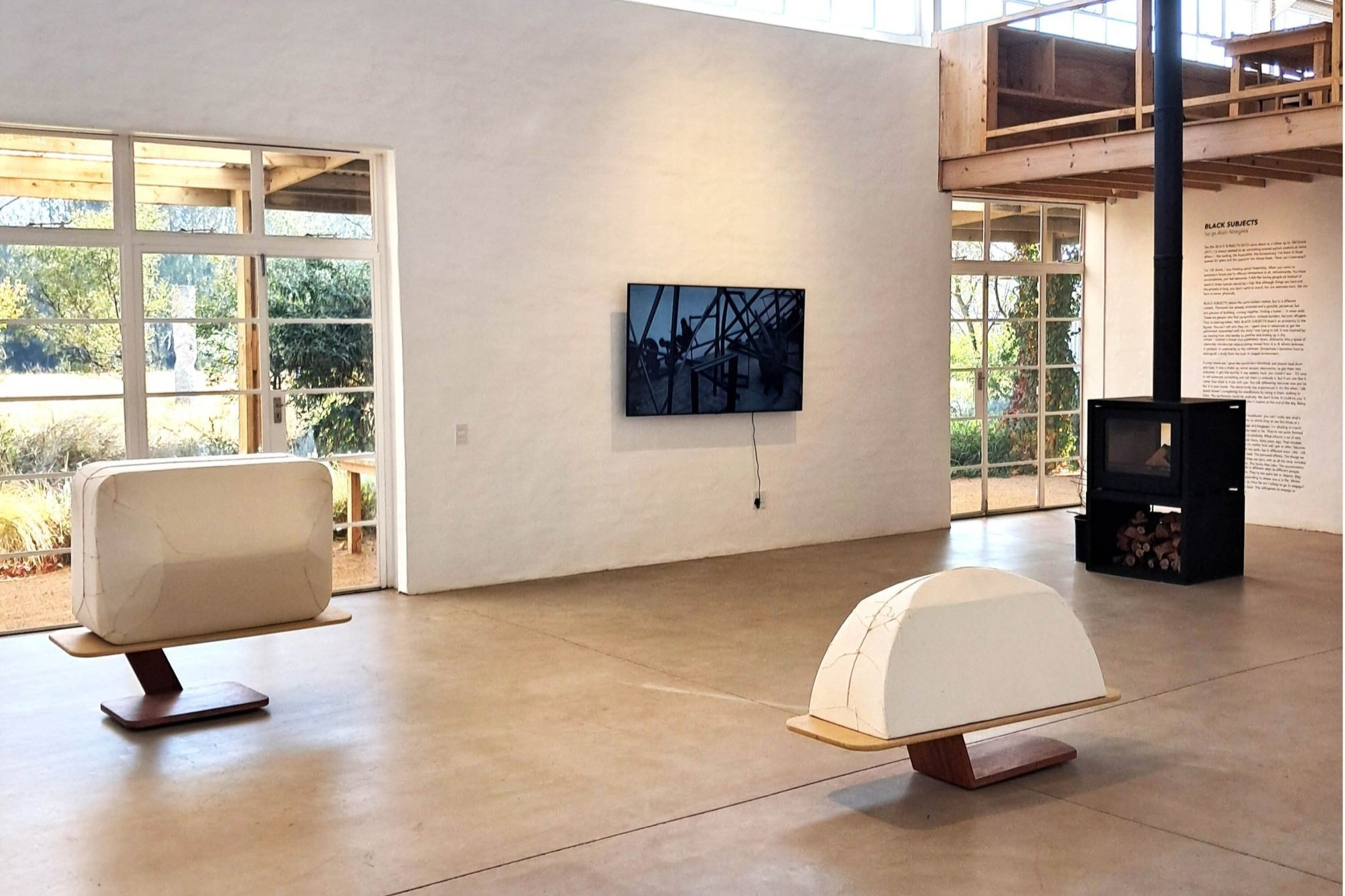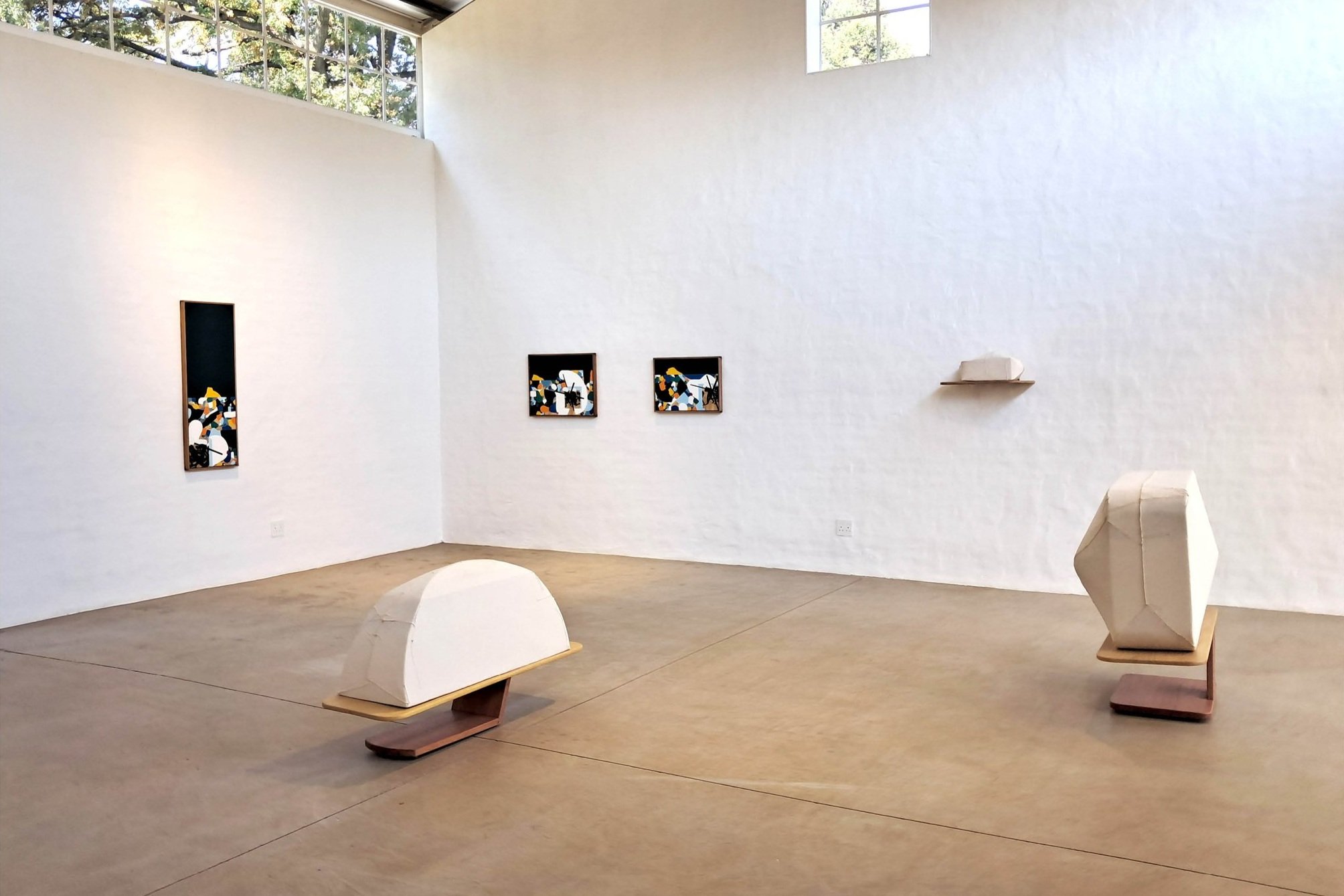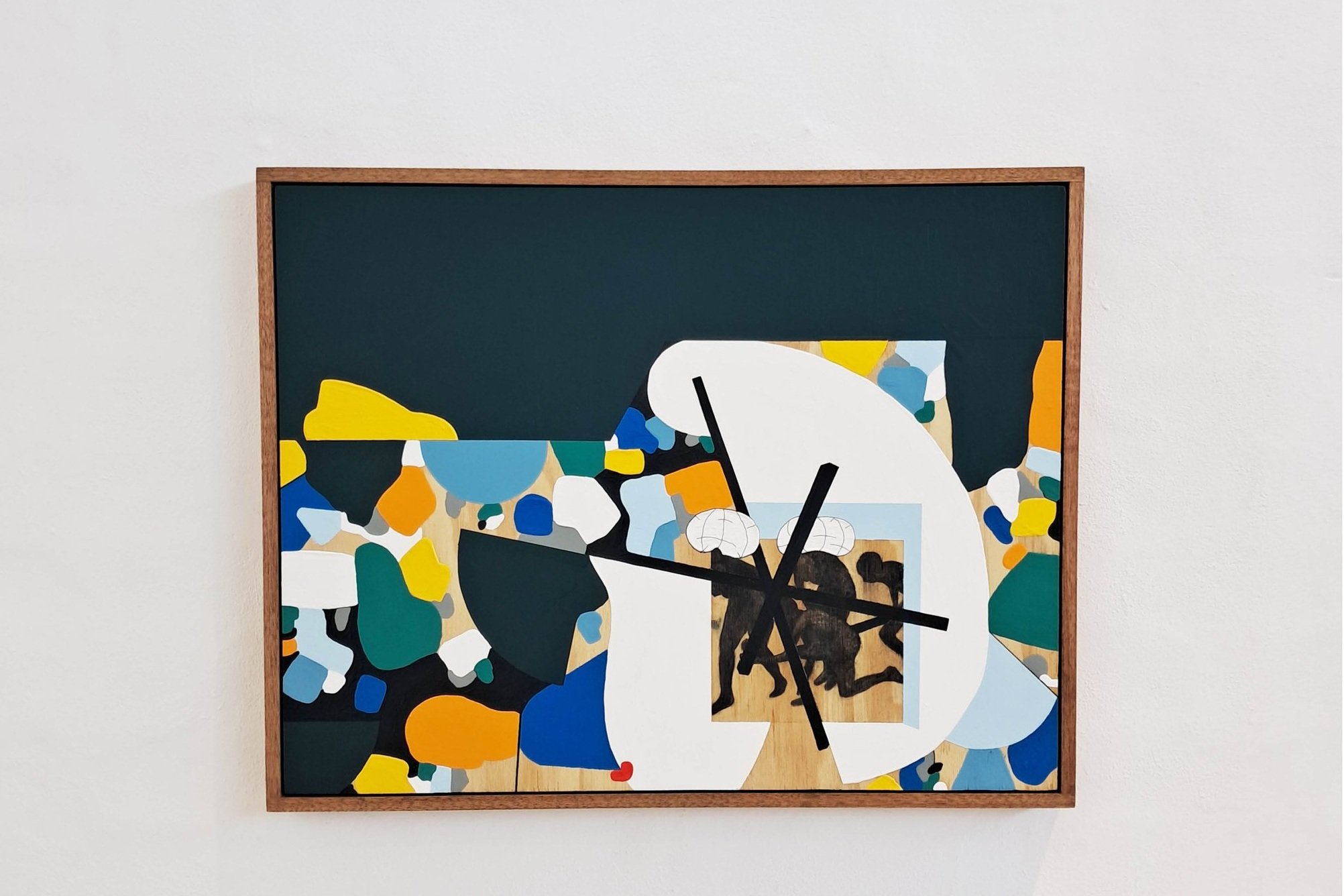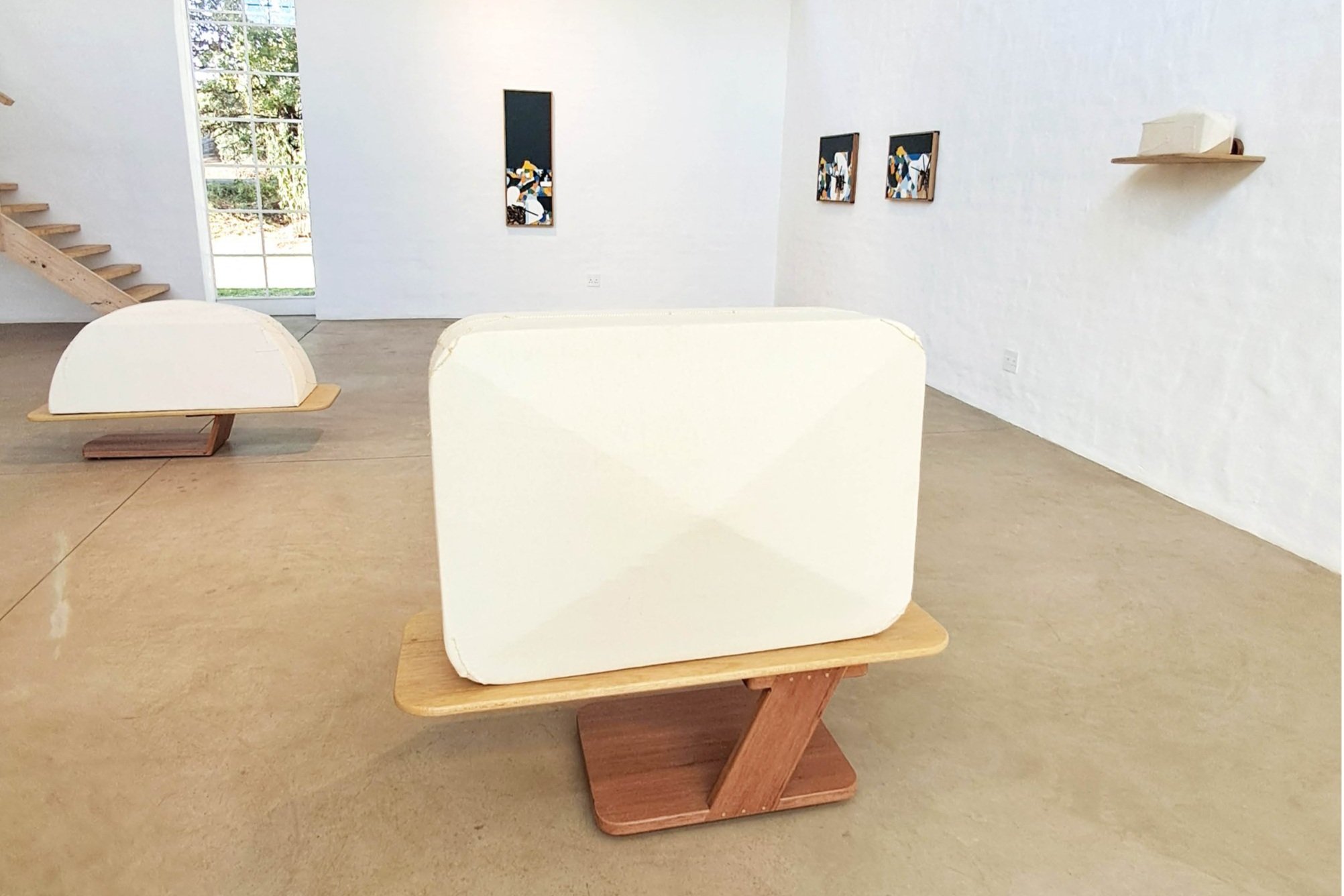Lines of Sight, Part II: Serge Alain Nitegeka, BLACK SUBJECTS
16 April – 16 June
Catalogue
The film BLACK SUBJECTS (2012) came about as a follow up to 100 Stools (2011). I’d wanted to do something around asylum seekers at home affairs — the waiting, the frustration, the bureaucracy.
I’ve been in those queues for years and the question has always been, ‘How can I intervene?’ For 100 Stools, I was thinking about hospitality. When you come to someone’s house you’re offered somewhere to sit, refreshments. You have conversations, you feel welcome. It felt like having people sit instead of stand in these queues would be a sign that although things are hard and the process is long, you don’t need to stand. You are welcome here. We are here to serve, physically.
BLACK SUBJECTS shares the same subject matter, but in a different context. The event has already occurred and is possibly perpetual, but this process of building, coming together, finding a home — it never ends. These are people who fled persecution, crossed borders, become refugees. They’re seeking safety. With BLACK SUBJECTS there’s an anonymity to the figures. You can’t tell who they are. I spent time in rehearsals to get the performers acquainted with the story. It was inspired by me moving from one border to another and ending up in this school. I wanted to break that experience down, abstractly, into a space of obstacles; nondescript objects being moved from A to B, where darkness is symbolic of the unknown. Sometimes it becomes hard to distinguish a body from the built environment. During rehearsals I gave the performers blindfolds and played loud drum and bass. It was a shake up, to get them into character. It got hot quickly. It was sweaty, loud, you couldn’t see... It’s easy to tell someone something and ask them to embody it, but if you can feel it rather than think it, it sits with you. You talk differently, because now you’ve felt it in your bones. The whole body has experienced it. It’s like when I talk about viewer’s completing the installations by being in them, walking in them. The performers could be anybody. We don’t know. It could be you. It could be someone you know. Trauma is trauma at the end of the day. Being uprooted is a trauma.
With the Lost and Found series of sculptures, you can’t really see what’s inside these bundles. The platforms on which they sit are like those at a train station — raised, flat. Luggage and baggage. I’m alluding to transit, movement. They’re not where they need to be. They’re not quite finished as objects. They don’t yet belong to anybody. What informs a lot of who I am at this point in time is still back there, thirty years ago. That mindset never goes away. It stays with me no matter how old I get or who I become. That way of being features a lot in my work, but in different ways. Like I talk about all these cargos, about the load. The personal effects. The things we carry when we leave home. The things we carry with us all the time, invisible and visible. How we package them. The forms they take. The accumulation of things over time, which manifest in different ways to different people in different times, wherever we are. They’re not quite set as objects, they change and take different forms according to where one is in life. Where one lives. Or what one has access to. How far am I willing to go to engage? It’s a question that is asked of the body. The willingness to engage or understand, to sit with something...







